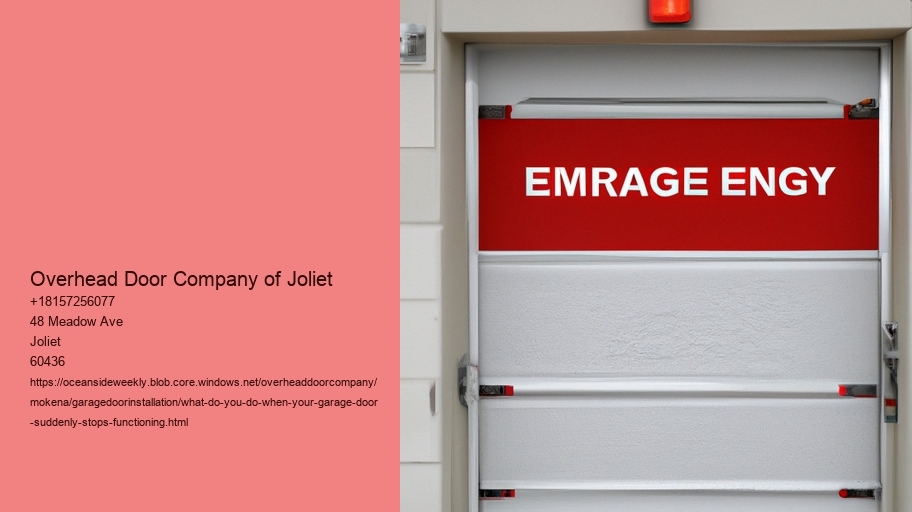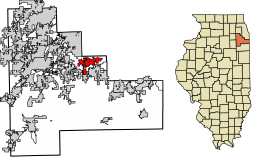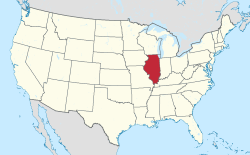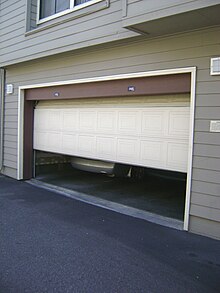Determine the Type of Garage Door and Opener
When a garage door suddenly stops functioning, it's a frustrating and inconvenient experience.Whether you're hurrying for work, or trying to get your car to the garage after a heavy rain and the door stops working, it's the last thing you need to have to deal with.The initial step to tackle this issue is to know the kind of opener and garage door you have, since this will dramatically affect your method of fixing and troubleshooting. .
Roll-up garage doors commonly used in commercial settings constructed from Slats that are folded into a coil.
The tilt-up doors, on the contrary is a solid single piece that opens by tilting inward and up.Equally important is identifying the type of garage door opener.The three types of garage door openers include belt-drive and chain-drive and screw-drive openers.Chain-drive openers, that use chains of metal to raise and lower the door, are long-lasting and affordable, however they can be noisy.Belt-drive openers function similarly, however, they employ a rubber belt, making them quieter and a good choice for attached garages.Screw-drive openers operate by means of a threaded steel rod and offer a good balance of noise and cost.
After you have identified your garage door's opener type, the next step is to conduct a a basic check for common issues.Ensure that the power source is connected to the opener by checking the outlet and breaker.Inspect the release cord for manual to make sure that it's not pulled, which will disconnect the door from the opener.Examine the tracks of the door and rollers to see if they have obstructions or damages and remove any obstructions.
Lubricate moving parts as needed, as lack of lubrication can cause sticking or jamming.Resetting your opener is a solution to any electronic malfunctions. Read the manual of the opener you're using to find out the specific steps. Certain openers can be reset by pressing the button, whereas others require to be disconnected from the unit and then re-plugged.
Spring tension is too high and it can be hazardous to repair them if you don't have the right tools.
In the end, if the garage door stops working, it is
Look for any obstructions or other debris
When the garage door abruptly ceases working, it can be extremely frustrating and confusing, especially if it's a part of your routine.
One of the basic and most efficient steps you can undertake when faced with this situation is to search for any obstructions or debris.This easy, yet efficient action is often the most effective way to identifying the issue and restoring functionality to your garage door.Garage doors are based by a set of tracks, rollers, and other moving parts that need to be clear of any obstacles in order to function smoothly.Over time dirt, leaves, tiny rocks, or any other debris can accumulate on the tracks or become caught in the rollers.Even a small obstruction can cause the door to stop opening or closing properly.Therefore an in-depth inspection of these parts is your first step.
Begin by examining the tracks on both the left and right side of the door. Examine for obvious obstructions, or debris buildup. If you notice anything unusual, such as something like a twig, or rock that is stuck in the track. Get it removed with care.
Sometimes, the issue might not be evident immediately So, it's recommended to run your hands through the track and feel for any unseen obstacles.Ensure that the tracks are aligned properly in addition, as in the event of a misalignment, it could result in the door becoming jammed.Also, inspect the hinges and rollers. These parts must be able to move without resistance. If they're stuck or sticky, this could be due to rust or a build-up of grime. Cleaning and lubricating the parts will typically solve the issue.
It is also essential to inspect the area around the door itself.Sometimes things stored in the garage can accidentally move or fall, blocking the way of the door.Ensure that the area is cleared and that there's nothing that is hindering the door's movement.
What do you do when your garage door suddenly stops functioning? - single-family detached home
- leadscrew
- tax
- water slide
Check the sensors if the door does not open after you have removed any obstructions.
Modern garage doors are fitted with safety sensors to prevent doors from closing when anything is detected within the path.Make sure that the sensors are clean and properly aligned, as any dirt or misalignment may cause them to malfunction.In conclusion, when faced with an garage door that suddenly isn't functioning, checking for obstructions or debris is a reasonable and often effective first step.It will require only a few tools and knowledge, but it could save your time, money, as well as the inconvenience of contacting a professional for what could be a straightforward fix.By keeping a clear path and
Check the Remote Control as well as the Wall Switch
It's important to check the wall switch as well as the remote control.
Checking these components can help you to save time and avoid costly mistakes.First, consider the remote control.This handheld device is your primary tool for operating the garage door without direct physical interaction.Over time, remote controls can experience issues such as drained batteries, signal interference, or even internal damage.Start by replacing the batteries with new ones.It might seem simple, but dead batteries are a common reason for a garage door not responding.If the problem persists after replacing the batteries, try reprogramming the remote according to the manufacturer's instructions.Additionally, ensure that the remote is within the recommended range and that there are no obstructions blocking the signal.
Next, turn your attention to the wall switch, which is also a crucial component of the garage door's mechanism.
The wall switch is directly linked to the garage door opener, and often provides a more reliable method of operation.Inspect the switch for indications of physical damage or wear.Sometimes loose wires, or weak connections could make the switch malfunction.If you feel confident doing so, carefully open the switch panel and examine any damaged or broken wires.If you discover any issues, it may be necessary to contact an expert electrician to address the problem.The remote control or wall switch is working, but the door is not yet responding. This could mean a problem with the garage opener unit, or with other components for example, sensors or door tracks.
What do you do when your garage door suddenly stops functioning? - single-family detached home
- St. Louis
- extension cord
- single-family detached home
This initial examination will help you save time and provide peace of mind knowing that you've taken the proper steps to diagnose your problem.
Manually test the door balance
It's frustrating and frustrating when the garage door ceases working. The garage door is an essential component of your house because it gives you security, protects against elements, as well as ease of access to your car and storage space.
Manually testing the balance of the garage door can be crucial step to take if your door is malfunctioning. This easy but efficient method will help you diagnose any issues that might be present and also prevent the possibility of further damage.The balance of a garage door is crucial to its optimal operation. An imbalanced door can cause more serious problems which include misalignment and broken springs.
To manually test the door balance, begin by disconnection of the garage door opener.
The majority of garage doors come with a release system that can be found on the red cord or the handle. After the door has been unplugged from the motor, lift it up to waist height and release it. A properly balanced door will stay in place and move at a slow pace.It is recommended that you contact a professional to help you adjust the springs in order to ensure that the garage door is balanced. This is not just going to resolve the issue however, it will also enhance the longevity and durability of the system.
In conclusion, manually checking the door's balance is a crucial initial step when your garage door suddenly stops functioning.
When you take action quickly and knowing the significance of addressing them, you can be sure that your garage door will function smoothly and safely in the future.Take a look at the tracks and rollers.
This simple test will reduce your expenses and save you time when your garage door is not working.
The tracks and rollers of your garage's operational system are crucial. The tracks comprise the metal rails that help guide the door as it opens, and the rollers travel across the tracks.
These parts can be worn out, dirty or misaligned as time passes. This can cause issues with operation.Begin by examining the tracks for obstructions.Dust and grime even tiny pieces of debris can build up within the tracks, causing the rollers' to be hampered as they move across the path.Cleaning the tracks with an damp cloth will often resolve these issues.Make sure that you dry them well afterward to stop rust from forming.
Then, check the alignment of the tracks.Tracks should be perfectly straight and parallel to other.If they appear bent or out of alignment, the door can jam.You can gently tap the misaligned portions back into their proper position with an rubber mallet.However when there is a significant amount of damage then it is recommended to contact a professional to re-align the tracks in a way that is safe and efficiency.
It is also important.Over time, the rollers could wear out or become damaged particularly if constructed from plastic.
Metal rollers that have bearings last longer, and provide more smooth operation.Applying silicone-based lubricants can reduce friction and wear. Make sure to lubricate the hinges as well as the springs so that your garage door works efficiently.
In conclusion, checking the tracks and rollers is a sensible first step when the garage door suddenly isn't working.It's a straightforward process that can often identify and resolve typical issues.By checking that the components are properly aligned, clean, and properly lubricated, you will often repair your garage door to its full function without having to make costly repairs.
Taking the time to regularly inspect and maintain these parts can also prevent future malfunctions, prolonging the life span of the garage door system.Check for visible damage or Wear
When garage doors suddenly stop working, it's annoying and disconcerting, particularly if you are just getting out of the house or trying to make sure your home is safe for evening.While there could be various reasons behind the issue, one of the most effective and quick actions to do is check for any visible damage or wear.This initial examination can uncover the cause of the problem, allowing the door to be repaired quickly and efficiently. solution.
The garage door is a complicated system made up of many components, including springs, cables track, rollers, and tracks all of which play a crucial role in the seamless operation.Over time, these components are prone to wear and tear as a result of frequent use and exposure to environmental factors.
It is easy to identify obvious flaws by performing an inspection visually.Start by looking at the springs, which are critical for lifting and lowering of the door.Look for indications of breakage, rust, or misalignment.A damaged or worn spring could render the door inoperable and it is crucial to take care of this issue promptly.Next take a look at the cables and inspect for damaged or frayed strands that could impede the door's movement.Similarly examine the rollers and tracks for any dents, debris, or obstructions that may hinder the door's movement.
The door is another area that requires the attention of a professional. Check for obvious damage, warping or bends.
Additionally, ensure that the door's sensors are clean and aligned, as misalignment or dirt may interfere with their functions and make the door stop working.A visual inspection can be beneficial however, you must be aware that not every issue is immediately apparent. If you don't see any obvious signs of wear or damage you may have to consult with a specialist to pinpoint the issue.
This strategy will not only help you identify the problem quicker, but help you take steps to restore the functionality of your garage door.
Being proactive and vigilant You can ensure the longevity and security of the garage door.Check the Springs and Cables
When your garage door suddenly stops working and then it stops working, it can be frustrating and inconvenient.One of the most crucial things you should do when faced with this issue is to examine the springs as well as cables.These parts are crucial to the functionality of your garage door, and issues caused by them are usually the culprits behind a malfunctioning door.
Springs play an important function in the operation of your garage door by helping to balance the door's weight.When the door is moving, the springs carry the bulk of the load and allow the door to open and close smoothly.There are typically two types of springs: the torsion and extension springs.Torsion springs are placed above the garage door and are twisted to store energy.
What do you do when your garage door suddenly stops functioning? - single-family detached home
- steel
- ice rink
- broadcast syndication
The same is true for cables as they work with springs to raise and lower the door.They are generally made of steel and are designed to withstand substantial tension.However, they can suffer from wear and tear, break, or snap due to the enormous pressure they're under.A broken cable could cause the door to become unbalanced or become completely inoperative.
If you're not sure whether the cables or springs have to be adjusted or not, visually check them. Check for signs of wear and rust.
Safety is the most important factor while dealing with garage door components.
Cables and springs are held at pressure and could result in serious injury should they be mishandled.If you're unfamiliar with garage door repairs, it's wise to seek out a professional technician.They have the right tools and knowledge to repair or replace these components, ensuring your garage door functions correctly and safely.In conclusion, when your garage door suddenly stops working, assessing the springs and cables is a key step in diagnosing the problem.Understanding their role and potential issues can help you determine whether a simple adjustment is needed or if professional intervention is required.Taking prompt action not only restores functionality but also ensures the safety and longevity of your garage door system.
It is recommended to call a professional Technician
If your garage door suddenly stops working the door can cause disruption to your day, and may even pose danger to the security of your home.
It may be tempting to grab tools to attempt a fix by yourself, but it is best to call an expert. This decision will not only guarantee your security, but will also offer a long-lasting, more efficient solution.Garage doors are complex systems composed of various components such as springs, cables, tracks, and electronic parts.Each of these elements plays a crucial role in the door's operation, and a malfunction in any part can cause the entire system to fail.Without proper knowledge and experience, attempting to fix these issues can be dangerous.For instance, garage door springs are under high tension and can cause severe injury if handled improperly.Professional technicians are trained to deal with these risks safely, using the right tools and techniques to handle repairs.
A skilled technician adds a degree of know-how and experience to the table that laypeople do not have.
They can quickly diagnose the issue and identify whether it's a minor problem, like a misaligned track, or something more serious, like a broken spring.This expertise not only saves you time but also prevents the potential for further damage that can occur with incorrect handling.Professionals also have access to high-quality parts and can ensure that replacements match the specifications of your existing garage door system, leading to better functionality and longevity.Additionally having a professional on your team can be more cost-effective over the long run.While the DIY strategy may appear less costly initially, the chance of mistakes is high. This could result in more extensive and costly repairs in the future.A professional technician will get the job done exactly the first time, minimizing the risk of having to deal with issues that arise repeatedly.
The majority of technicians provide warranties for their services. This provides security in the event that something goes wrong, your issue will be protected.Contacting a professional can save you time and money. It can be difficult to comprehend the workings of garage doors, purchase the appropriate tools and complete the repair can take some time or even days. A technician can solve the issue fast and allow you to get back to your normal routine.
The urge to fix the garage door yourself is strong. However, calling in a professional is the best option, the most secure and efficient option. Their experience and access to high-quality parts for replacement and their ability to complete quick and accurate repairs ensure that your garage runs well and safeguarding your home.


















